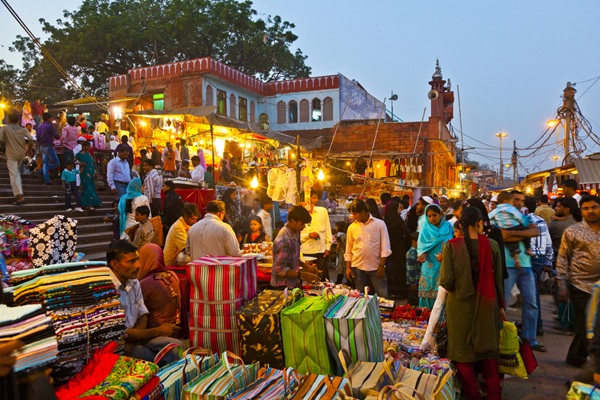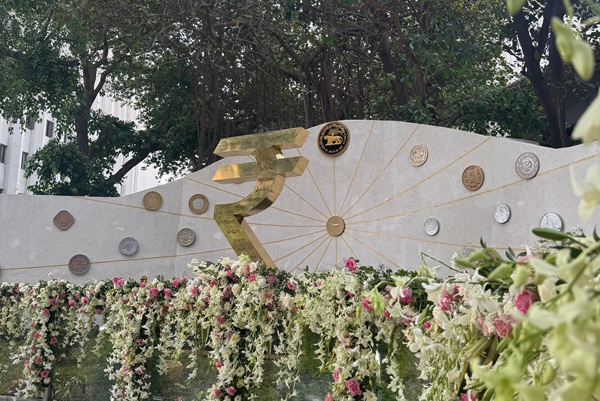.png)

By Shilpashree Venkatesh
Shilpashree Venkatesh is a research professional with expertise in macroeconomics, real estate, and infrastructure, focused on growth trends.
October 4, 2025 at 12:54 PM IST
India’s headline growth figures remain impressive, but beneath the surface, the economy is losing steam. Real GDP grew by 7.8% in the first quarter of 2025-26, yet nominal growth was only 8.8%, suggesting that price dynamics masked a more subdued performance. At the heart of this fragility lies a slowing consumption engine. Household demand, which makes up around 60% of output, is softening after more than a year of strain.
Durables, automobiles, and non-oil non-gold imports all reflect fatigue. Private final consumption expenditure grew at just 6.5% in 2024-25, the weakest pace since the pandemic. The government has stepped in with populist-sounding fixes: revised income-tax slabs for the middle class and a rationalisation of GST to simplify compliance and lower costs. In the short run, these measures can prop up consumer spending. Yet they come at a fiscal cost which may constrain government spending capacity and potentially stunt long term economic growth.
Fiscal Strain
Income tax and GST together account for nearly three-quarters of central revenues. Forgoing a portion of these receipts through tax reliefs can provide a temporary consumption lift, but the fiscal cost is steep. The finance ministry estimates a revenue loss of ₹1.48 trillion in 2025-26. Adjusted for this hit, the net contribution of the measures is expected at just 1.2%–1.4% of GDP.
The fiscal loss would be manageable if the government had ample room to borrow or rationalise non-priority expenditure. In the absence of such options, the burden risks falling on capital expenditure. Over the last decade, the fiscal spend towards capital expenditure has increased sharply, given its high multiplier effect. Central capex has climbed from 1.8% of GDP in 2015-16 to 3.1% this year, budgeted at ₹11.2 trillion. This has been the backbone of India’s infrastructure drive, highways, freight corridors, power grids etc which underpin long-term growth. Trimming that to balance the books would risk undermining the very growth gains tax reforms are intended to protect.
Historical experiences suggest that India’s high growth phases were driven more by structural reforms than by marginal tax adjustments, whether it was the 1990s liberalisation or the 2000s export-IT boom. A genuine take-off this decade will require something more substantial than household rebates.
Consumption Squeeze
Meanwhile, household liabilities are climbing far faster than savings. Between 2021 and 2025, liabilities expanded at an annual average of 15%, while savings crept up at only 3.1%. Therefore, much of the post-pandemic consumption burst was fuelled by borrowing rather than rising wages. If households use new tax reliefs to pay down debt instead of buying goods, the multiplier effect on the economy will be limited.
The private sector, which should be creating jobs and investing in capacity, as well is cautious. Gross capital formation by companies grew barely 2% in 2023-24, and intentions for 2025-26 are a quarter lower than the year before. Foreign direct investment has also been muted at just $29 billion in 2024-25, barely half the pandemic-era peak. That reflects global monetary tightening, but also India’s uneven investment climate. Without a revival in private capex, job creation will lag, incomes will stagnate, and consumption will remain subdued despite policy nudges.
External Headwinds
The rupee has already weakened to a record 88.8 per dollar, down 6% in a year. Foreign portfolio investors have pulled out $17 billion so far in 2025, raising financing costs for corporates. Large outflows are a classic warning sign: external shocks are transmitting into domestic vulnerabilities. If the RBI leans too heavily on reserves to stabilise the currency, import cover could erode. Managed depreciation, preserving competitiveness without a free fall, is the tightrope to walk.
On another front, US immigration policy adds to the uncertainty. The new H-1B visa fee of $100,000 will limit mobility and could dent remittances, nearly 28% of which flow from America. Over time this could reduce a key cushion for India’s balance of payments. Yet the same shift opens space for US companies to expand global capability centres in India, boosting services exports. Already, those exports have more than doubled in a decade to $388 billion. The challenge is to move beyond low-end outsourcing toward higher-value consulting, digital transformation, and AI integration.
Growth Prospects
The decline of manufacturing from 15% of GDP in 2014-15 to 13% today underscores the urgency. Programmes such as Make in India and production-linked incentives have not shifted the needle. To create jobs at scale, India needs to strengthen its industrial ecosystem—ease of land acquisition, reliable power, skilled labour, and integration into global supply chains.
India has overcome crises before. The 1990s balance-of-payments crunch catalysed liberalisation. The 2000s boom was anchored in IT exports. Today’s test is different: the growth engine must be a blend of resilient consumption and sustained investment. Tax reliefs are only sticking plasters. To break through the consumption wall, India must align policy towards raising incomes, rebuilding savings, and restoring investor confidence. Without that, the impressive GDP numbers will continue to mask an economy losing momentum where it matters most.




